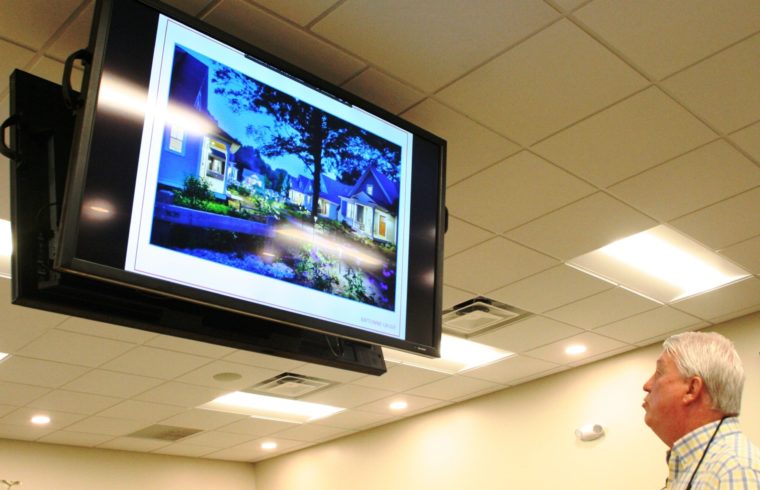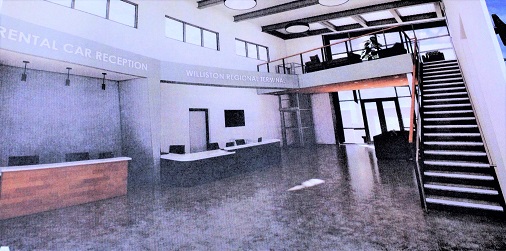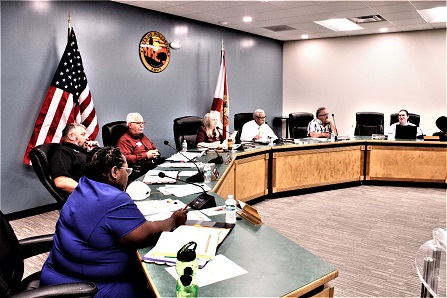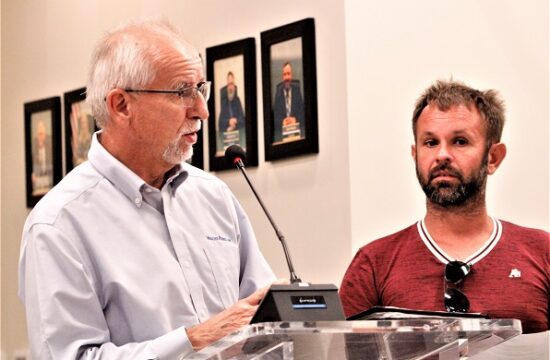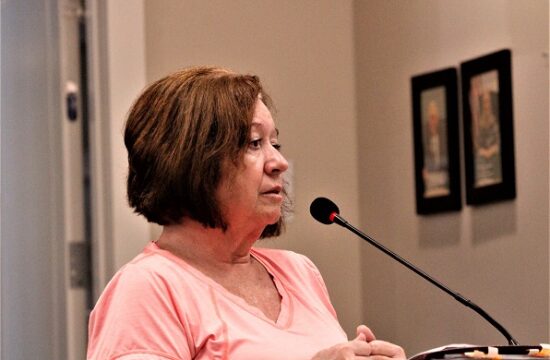Johnny Sims, an engineer for Laurel Point Planned Development looks at an overhead screen showing a conceptual drawing of what the residential development would look like.
A planned residential development in Williston that may look more like a quaint rural village when it’s finished than a subdivision moved through the early stages of the approval process Monday.
The Williston Planning and Zoning Commission voted 4-0 to recommend preliminary approval of the 47-home Laurel Point Planned Development that would wrap around the back and one side of Winn Dixie store off U.S. 27.
Commissioner Penny Boyer, who is one of new members of the commission, abstained from voting due to her husband being part of Camellia Plantation, Inc., the company developing Laurel Point.
The commission’s recommendation will go to the Williston City Council for possible approval Tuesday night.
The City Council will also consider a second development that won preliminary approval from the planning commission on a 3-2 vote. The commercial development would be constructed at the site of the former Williston High School.
Laurel Point Developers Ken Boyer and Dr. Wade Bullock, and the agent who represented them at the meeting, engineer Johnny Sims, all three native sons, believe Laurel Point could be something special.
The 8.81 acre planned development would consist of small houses clustered in units with one private drive serving the entire community. A small area would be set aside for retail commercial outlets.
One main driveway would pass behind all the clusters of small homes. Each grouping of homes would be served by a parking lot. There would be no individual driveways and no side streets.
The front of the homes would face a landscaped area that all the families could use. The homes would be small, in the range of 1,000 to 1,100 square feet.
“This is not going to be platted roads and driveways,” said City Planner Jackie Gorman. “This really reduces your environmental footprint in a sense that you’re not creating roads and driveways all the way through.”
Sims said the development should appeal to young people and older people.
“This type of development is a step up for the child who would go from a mobile home as their first home to a starter home, or at the other end of the spectrum a home for our elderly that would be close to a market, close to a medical area but it provides a close living space for those who like that kind of activity and like the openness of the landscape,” Sims said.
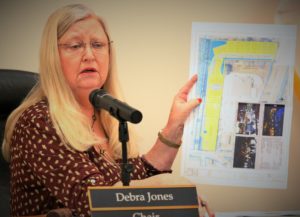
Planning Commission Chairwoman Debra Jones asked if the development would meet the Land Development Code requirements for minimum lot size and minimum dwelling size. Gorman said it wouldn’t meet those requirements but a planned development like this one allows greater flexibility and creativity in design and for meeting those standards.
Gorman said the developers must bring back an engineering and site plan that provides details on how open space is used, how fire separation and handicapped access requirements are met among other things.
“That is why this is a planned development. We come back to you for approval of the engineered plans. We will be identifying those parts of the plan that do not meet the Land Development Code. Again, that’s why you have a planned development in exchange for some flexibility in the code. We’ll probably be looking at setbacks to allow the density for this type of pocket neighborhood, but in exchange we look for things like fire separation and all those things that are important.”
Laurel Point will be served by central sewer, Sims said responding to a question from City Councilman Charles Goodman who was a member of the audience.
Answering a question from Commissioner Albert Fuller, Sims said he didn’t think there would be a problem with drainage when the engineered drainage system is in place and the drainage retention areas are carved out. He said nearby Camellia Plantation was designed with proper drainage and this project won’t be an exception. Camellia Plantation, Inc. is the development company that owns the property.
One resident asked if some type of sound barrier would be constructed to mask the sounds of large trucks parked near the future residential development. Sims said that issue would be addressed when the project design moves from the conceptual stage, where it is now, to the actual engineered site plan. He said the question of access for handicapped individuals would also be addressed as the development is engineered and the site plan is drawn.
The Laurel Point developers are asking for a small scale comprehensive plan amendment to change the land use from commercial to mixed use (residential and commercial). They want a zoning ordinance amendment changing the zoning from commercial to planned development, allows a mixed use.
————–
Williston Planning Board Meeting December 30, 2019; Posted December 31, 2019


